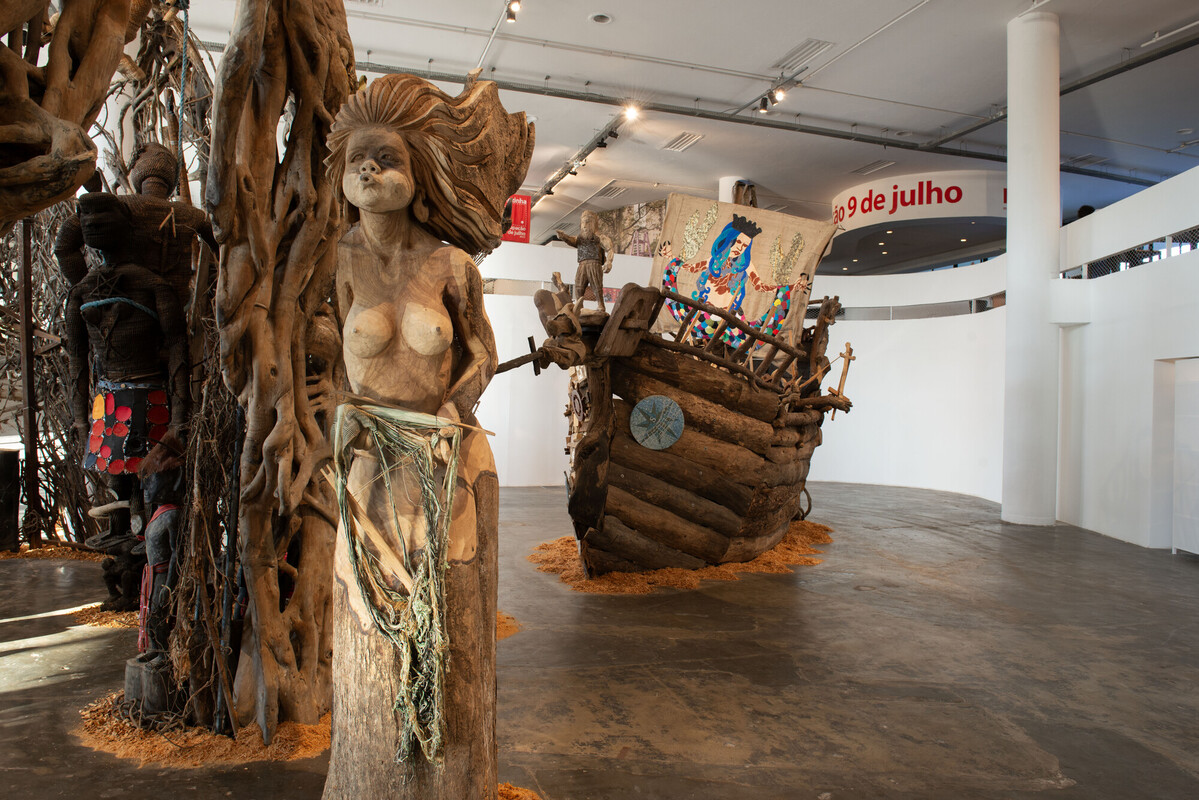
Kidlat Tahimik
Better known as an independent filmmaker, Kidlat Tahimik is the author of massive installations too. His complex and gigantic scenographies unfold an Indigenous storytelling confronting imperialism and colonial narratives. Mostly concerned about the extermination and destruction of genuine mythological figures, he recreates the cultural clashes with an epic overtone. The multiple stories and the many scenes that will be shaped through wooden sculptures seem to come out of the mind of a Hollywood scriptwriter. In the final representation, real historical names often mingle with fiction characters by collapsing time, well established periods, and distant geographies.
For the 35th Bienal de São Paulo installation, Kidlat Tahimik proposes an unlikely frieze that bings together Igpupiara and Syoykoy, ancestral mythological figures of Indigenous people in Brazil and Philippines respectively. This is but one chapter of the Magellans (1480– 1521) circumnavigation journey in which the invasion triggers a necropolitics that extends well beyond humans. First monstrified and then exterminated, the Igpupiara and Syoykoy figures embody the killing of tribal imaginaries, a pervasive and relentless cultural genocide that amplifies its tragedy with racial-ecocidal capitalism. Helicopters, chainsaws, and missiles fight an uneven battle against creatures half human half animal, altogether scenes that echo a cross-cultural theme park somehow inspired in the logic of the ninenteenth century exhibitions held by the colonial enterprise.
By messing up with the chronotopes inherited from modern discourses, the same ones that made plunder and extractivism legitimate forms of planetary government, the artist foregrounds yet another shade of violence. Undoing the imperial narratives through the degenerative logic of stories told once and again brings forth quite a strong counterimage of progress. In a postcolonial world the inventive capacities rely on twisting, blending, and mixing the past regardless of the categories that kept apart forms of life, common imaginary constructions and knowledge. So much that approaching Kidlat Tahimik’s installations it’s like entering the junkyard left behind by all imperial regimes.
carles guerra
Kidlat Tahimik (Baguio City, Philippines, 1942. Lives in Baguio City) works with film, photography, weaving, free-style architecture, and installations, mainly on environmental issues. Utilizing local craftsmen and found materials, he has designed and constructed two imaginative art centers, providing platforms for local artists and craftspeople to exhibit their works.He organizes conferences that bring together Indigenous peoples from around the globe. His first film, Perfumed Nightmare (1977), received the International Critics Award (Berlin, Germany)

 Português
Português